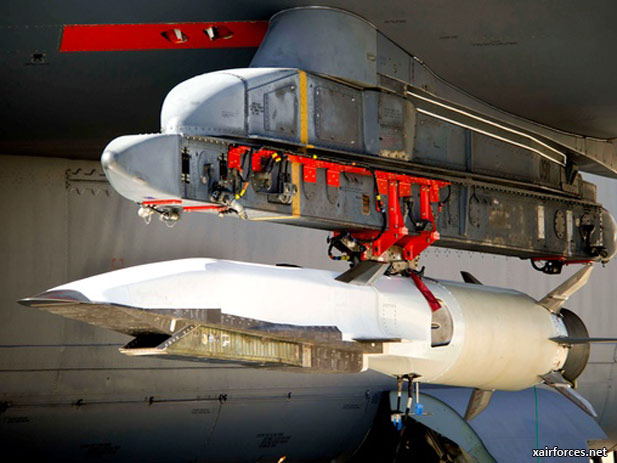
USAF X-51A Waverider Achieves Hypersonic Goal On Final Flight

The U.S. Air Force Research Laboratory’s (AFRL) Boeing X-51A Waverider demonstrator successfully achieved sustained, scramjet-powered, air-breathing hypersonic flight above Mach 5 in its final test flight on May 1.
Although the Air Force is not yet commenting on details of the flight, the X-51A is thought to have experienced positive acceleration to speeds in excess of Mach 5 and run for the full duration of the planned powered phase of the test. Based on targets established for the previous test attempt, this could have been as long as 300 sec., followed by an unpowered gliding descent of around 500 sec. prior to impacting the sea in the Pacific Test range west of California. If these times and speeds are confirmed, they will represent new records for sustained, air-breathing hypersonic flight.
The X-51A is intended to prove the viability of a free-flying, scramjet-powered vehicle and is considered an essential building block toward the long-anticipated development of hypersonic weapons and other high-speed platforms. However, despite the partial success of the first flight, which reached Mach 4.88 under scramjet power in May 2010, that mission ended prematurely after a malfunction, as did the second flight in March 2011 and third in August 2012.
Coming in the wake of these disappointing prior tests, the success of the May 1 flight could therefore be pivotal in helping drive further research and development to meet the Air Force’s long-term goal of hypersonic capability. The test involved the last of the four vehicles to be built by Boeing and configured with a Pratt & Whitney Rocketdyne SJX61 dual-mode ramjet/scramjet engine, and incorporated improvements and lessons learned from the three former flights.
These included better sealing between interfaces in the engine flow-path that are thought to have suffered “burn-through” on the first flight, allowing hot gases to penetrate the vehicle’s interior and prematurely ending the flight. Additionally, it incorporated hardware and software changes to counter issues that brought the second flight to a premature end after only 9.5 sec. of powered flight at around Mach 5. On this flight, the vehicle experienced an inlet un-start during the switch to hydrocarbon fuel, effectively blocking flow through the engine and shutting it down. Finally, the mission also included changes to the hypersonic cruiser’s control fins, one of which failed on the third mission, causing it to go out of control only 16 sec. into the test while still under boost.
For the final test, as with previous missions, the X-51A, attached to a modified Atacms missile booster, was launched from a B-52H mother ship over the Pacific. The stack separated from the B-52 and the booster fired as planned before the Atacms burned out and detached, and the scramjet ignited.
Source: By Guy Norris, AWIN First News - 2 May 2013
Photo: The U.S. Air Force X-51A Waverider Fighter Aircraft (Photo by USAF)
(2.05.2013)
|